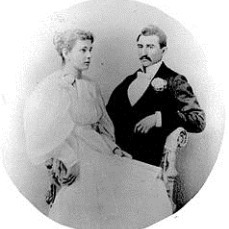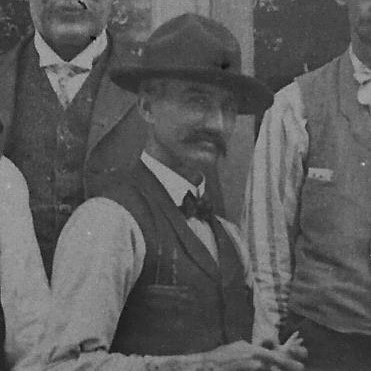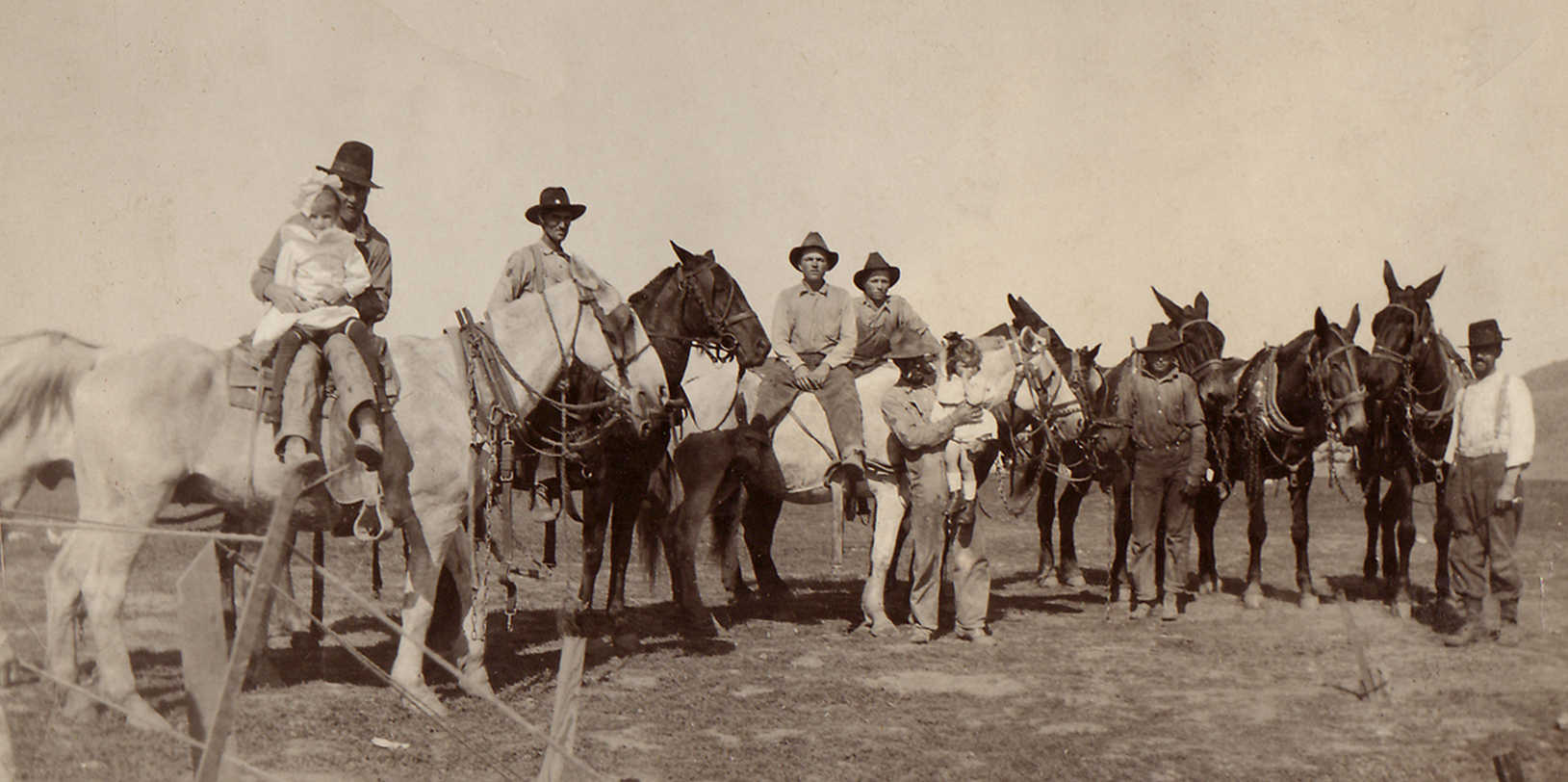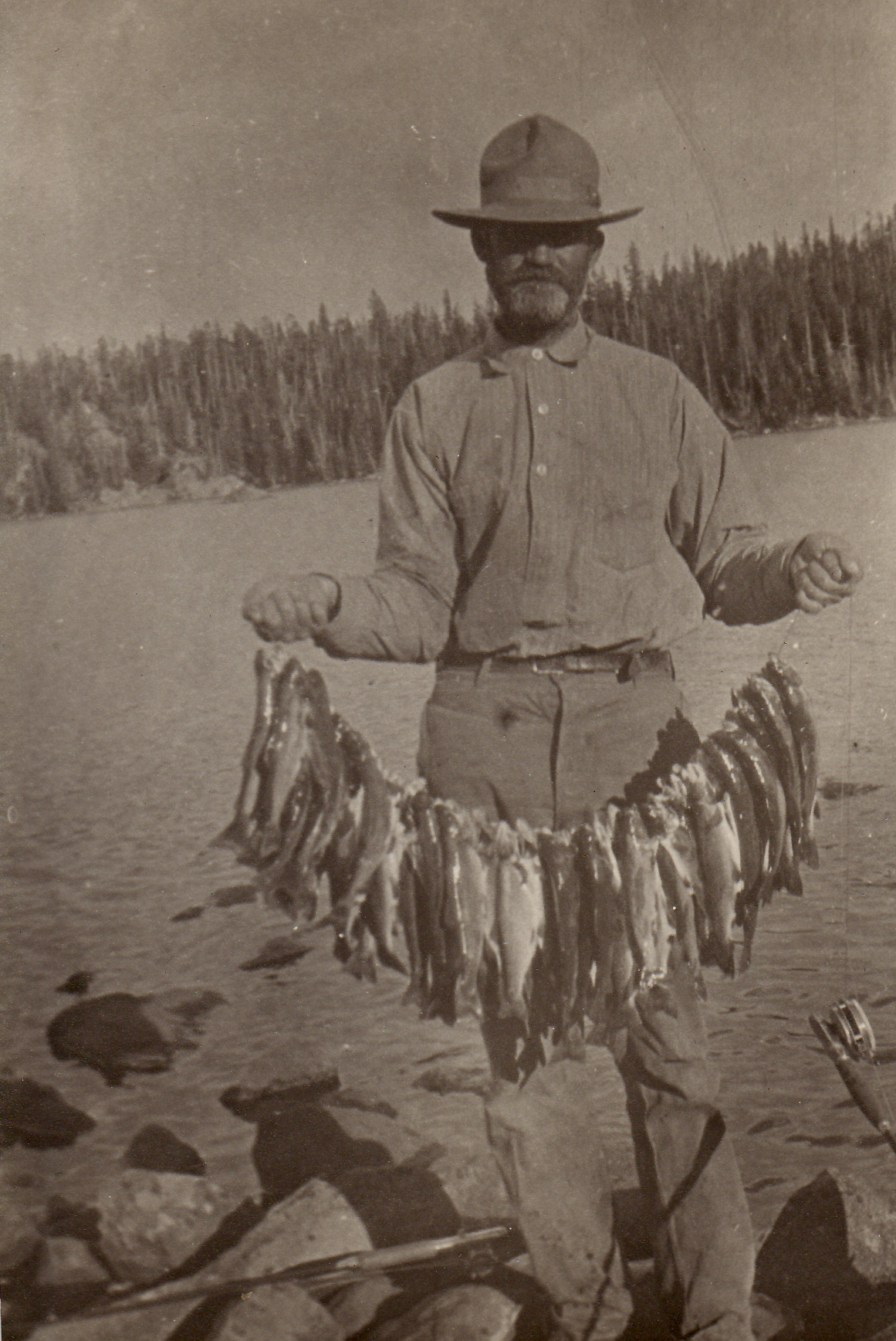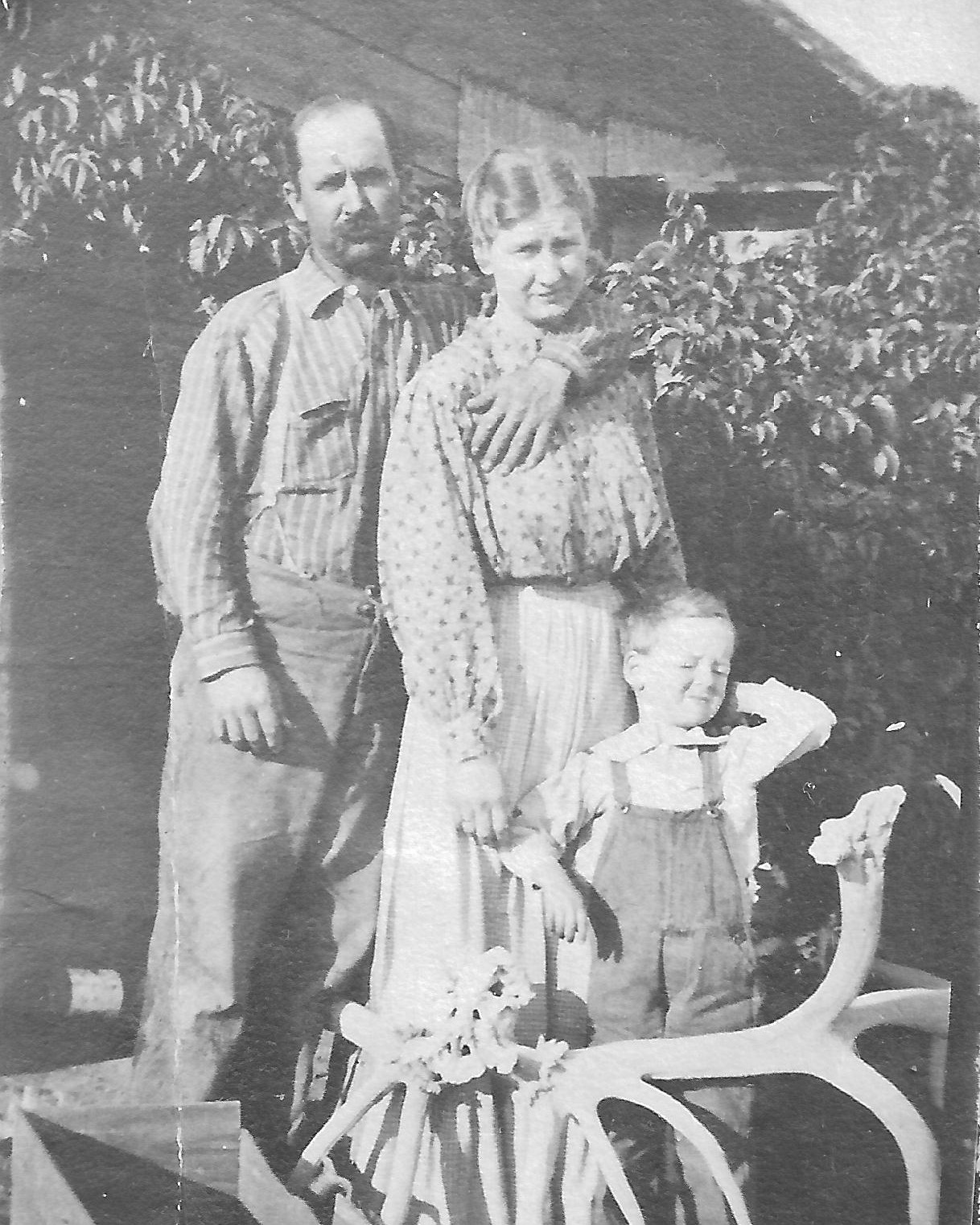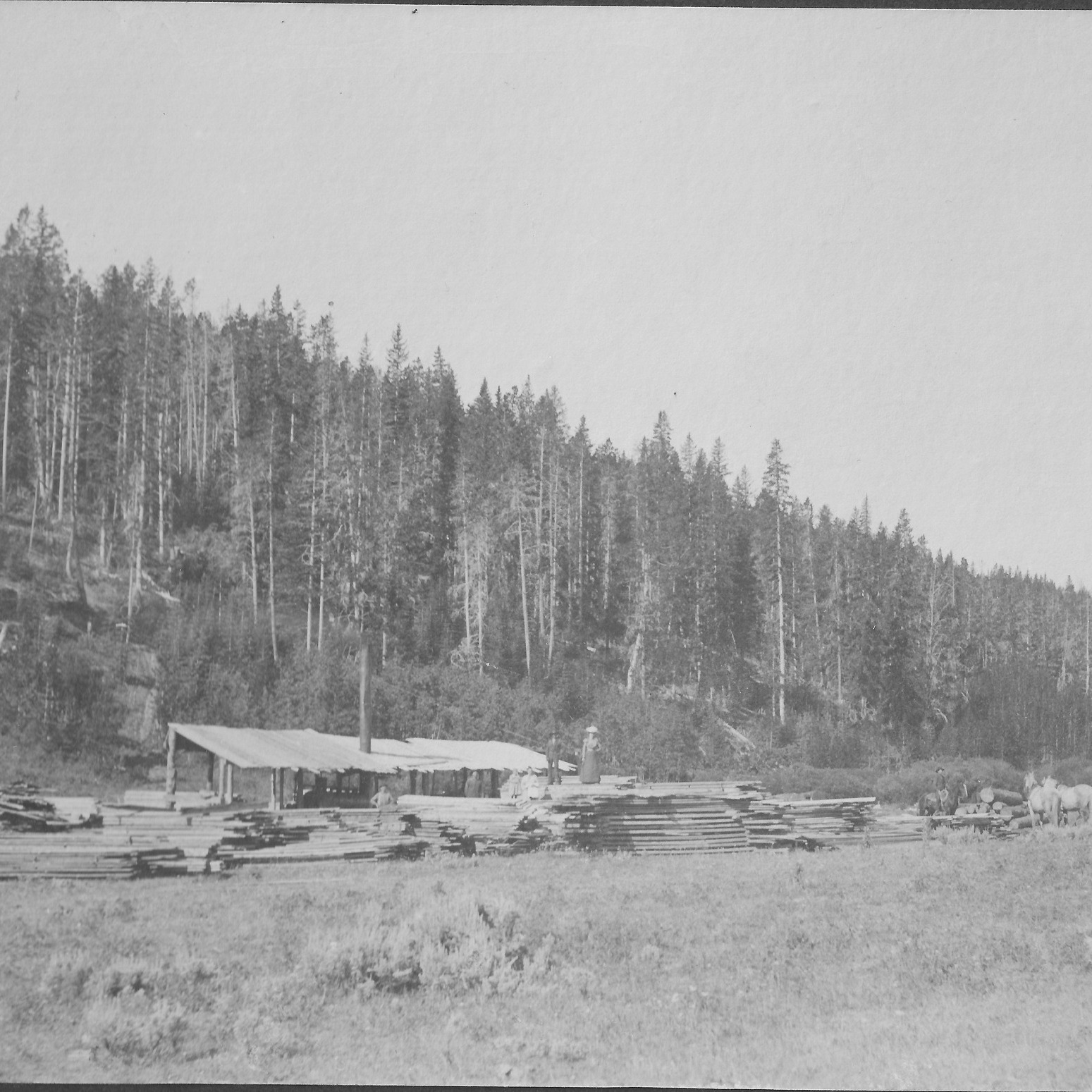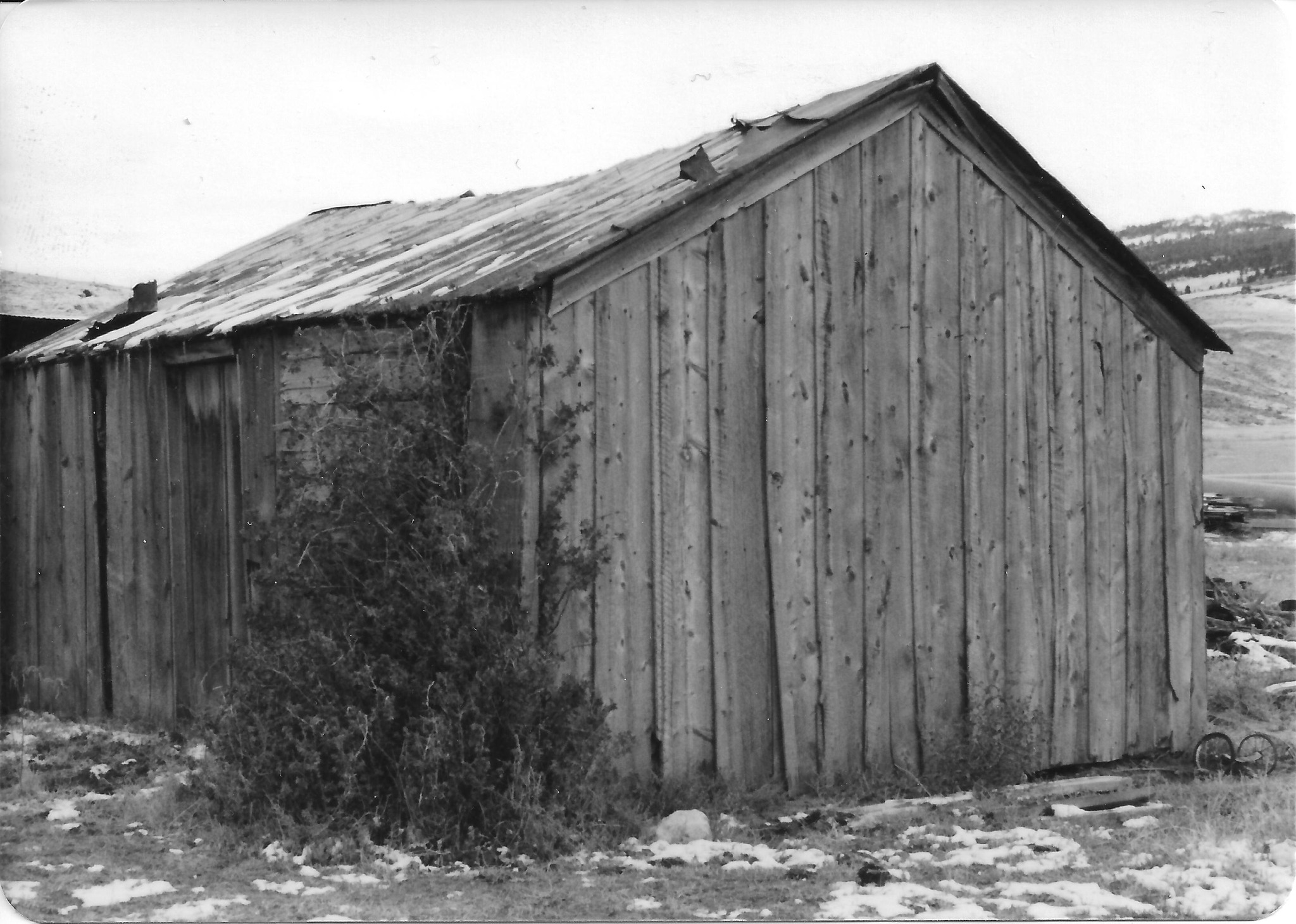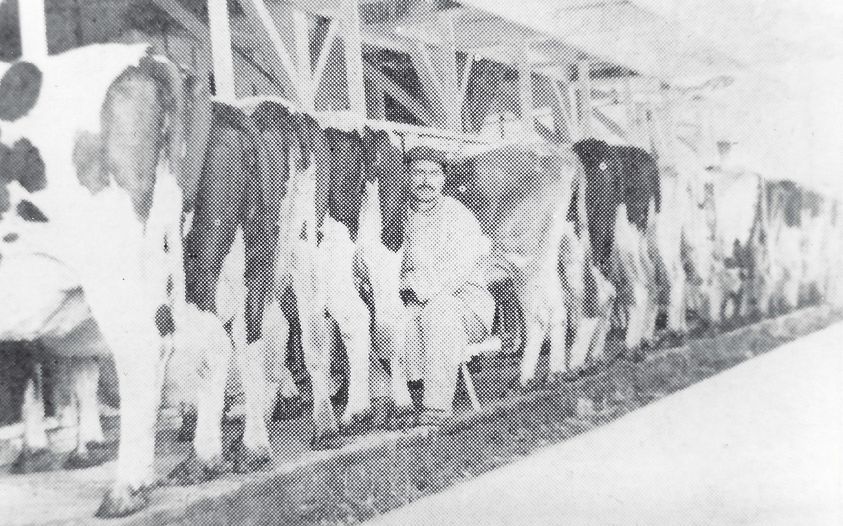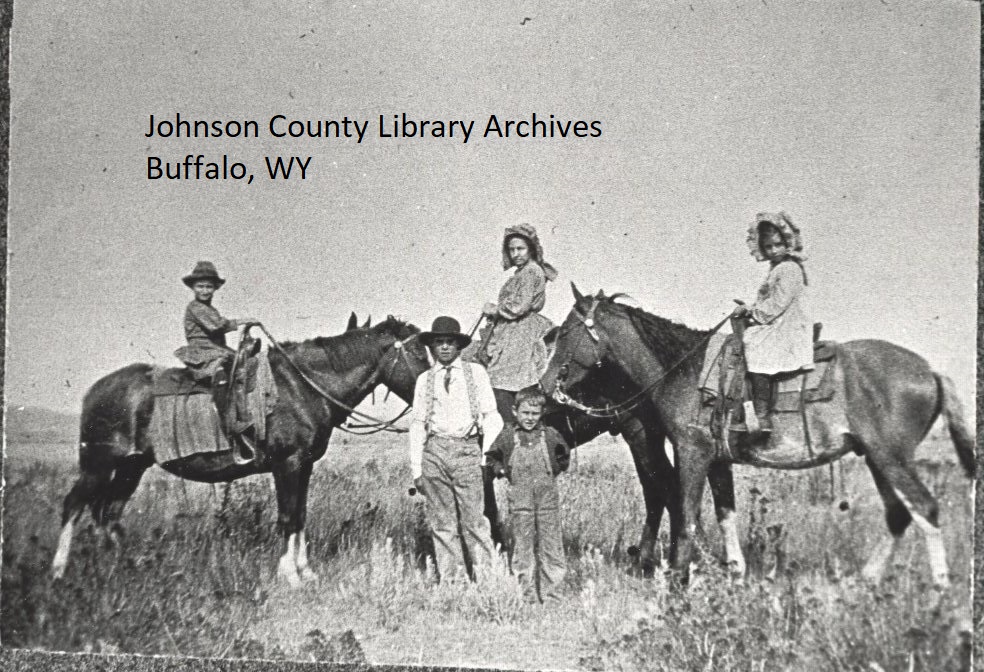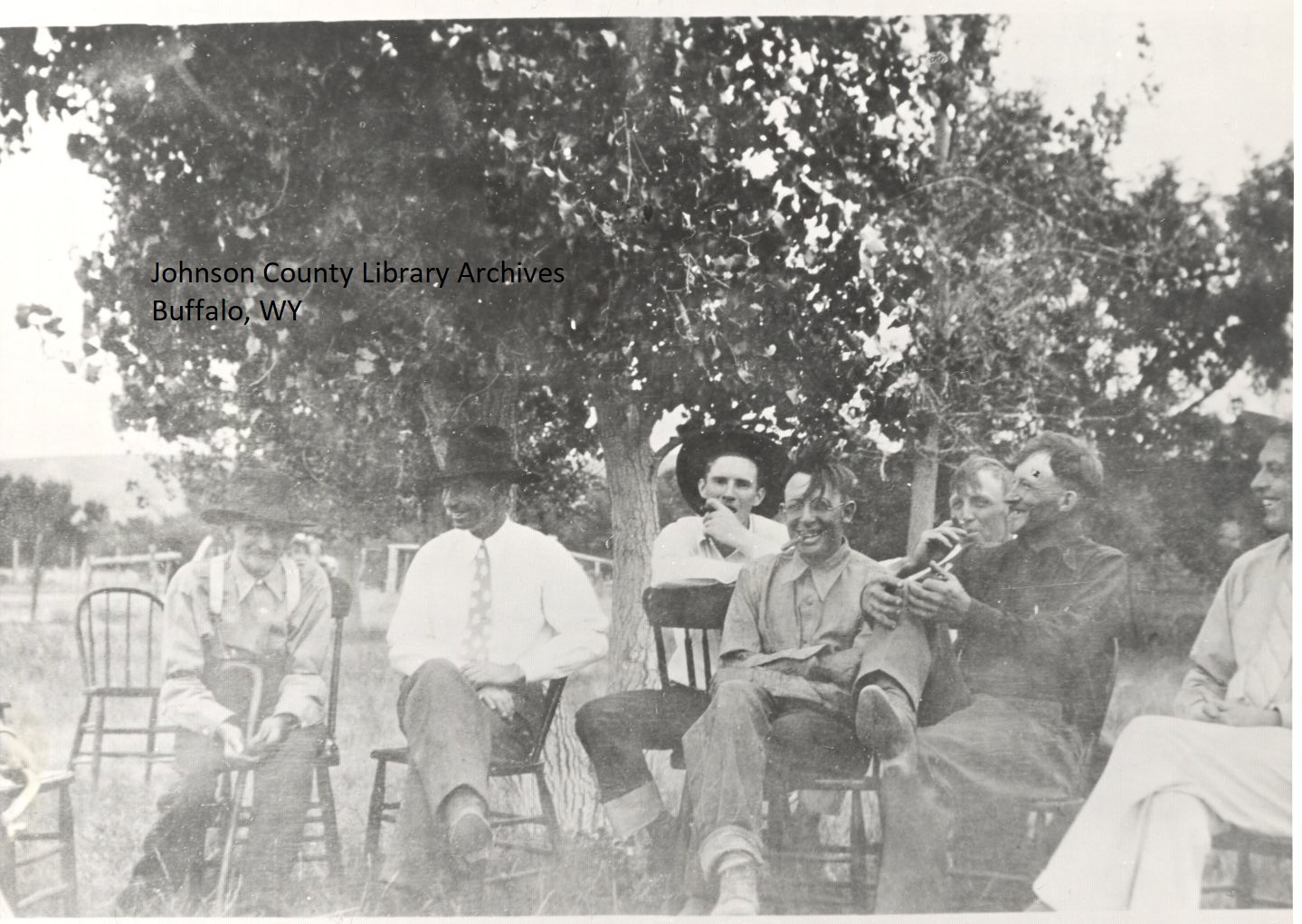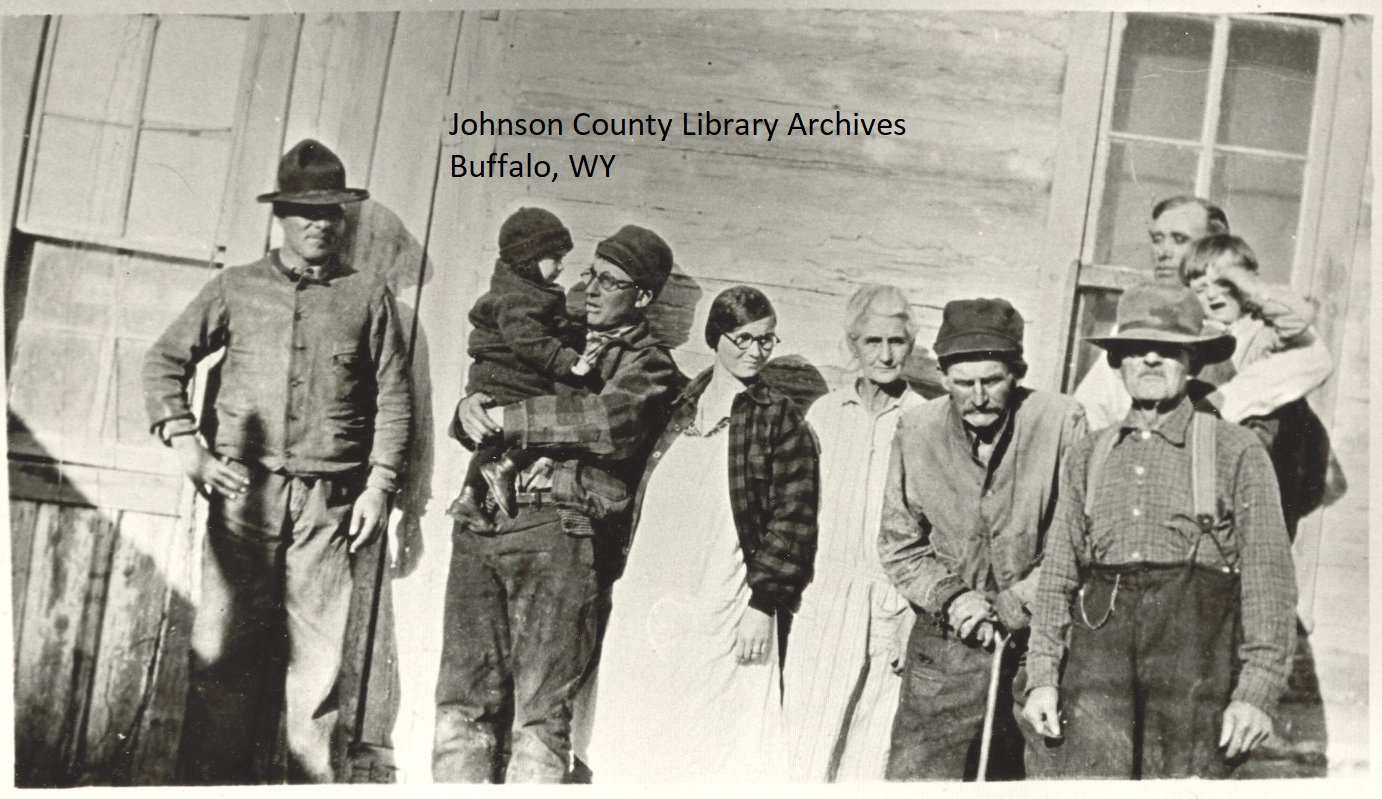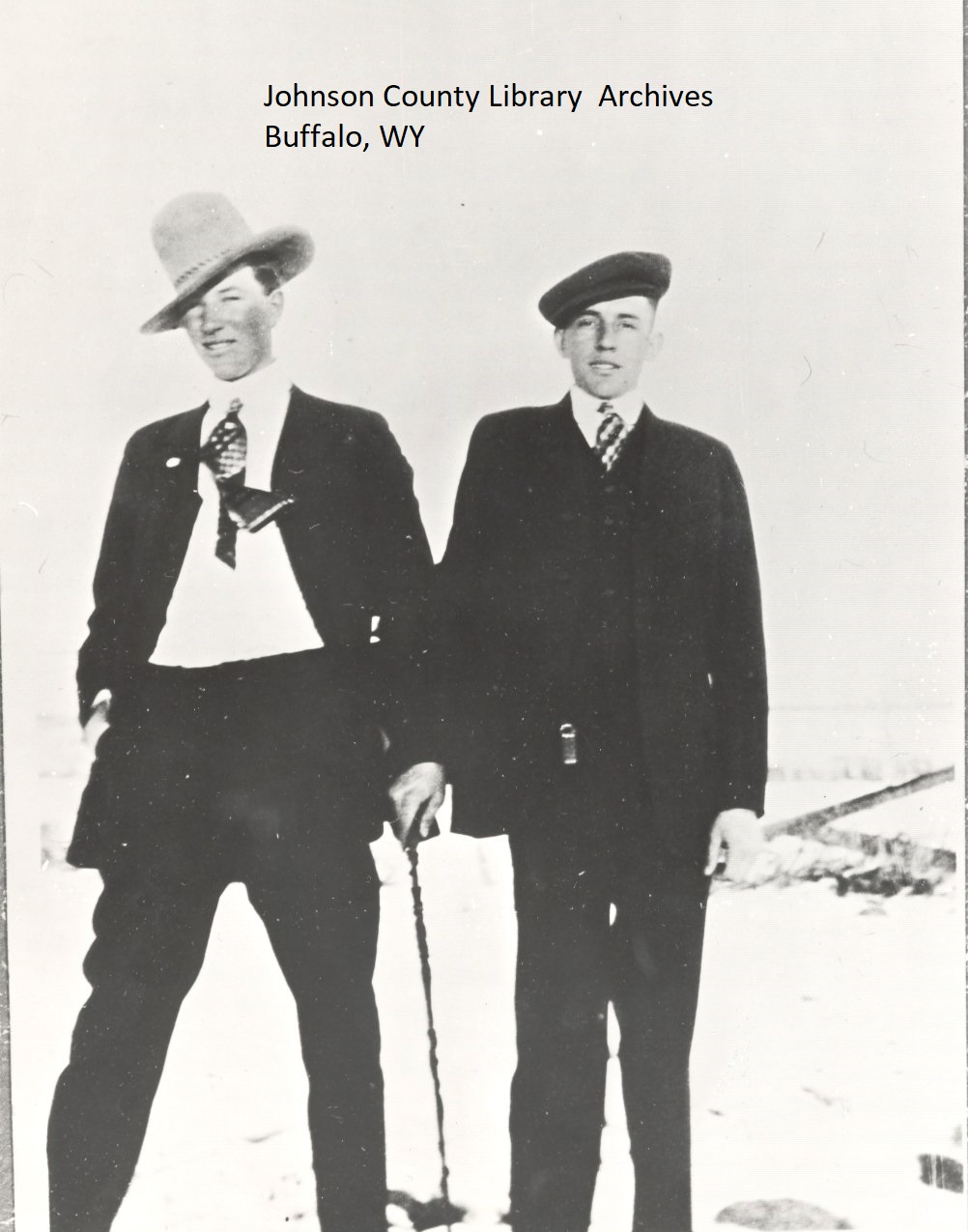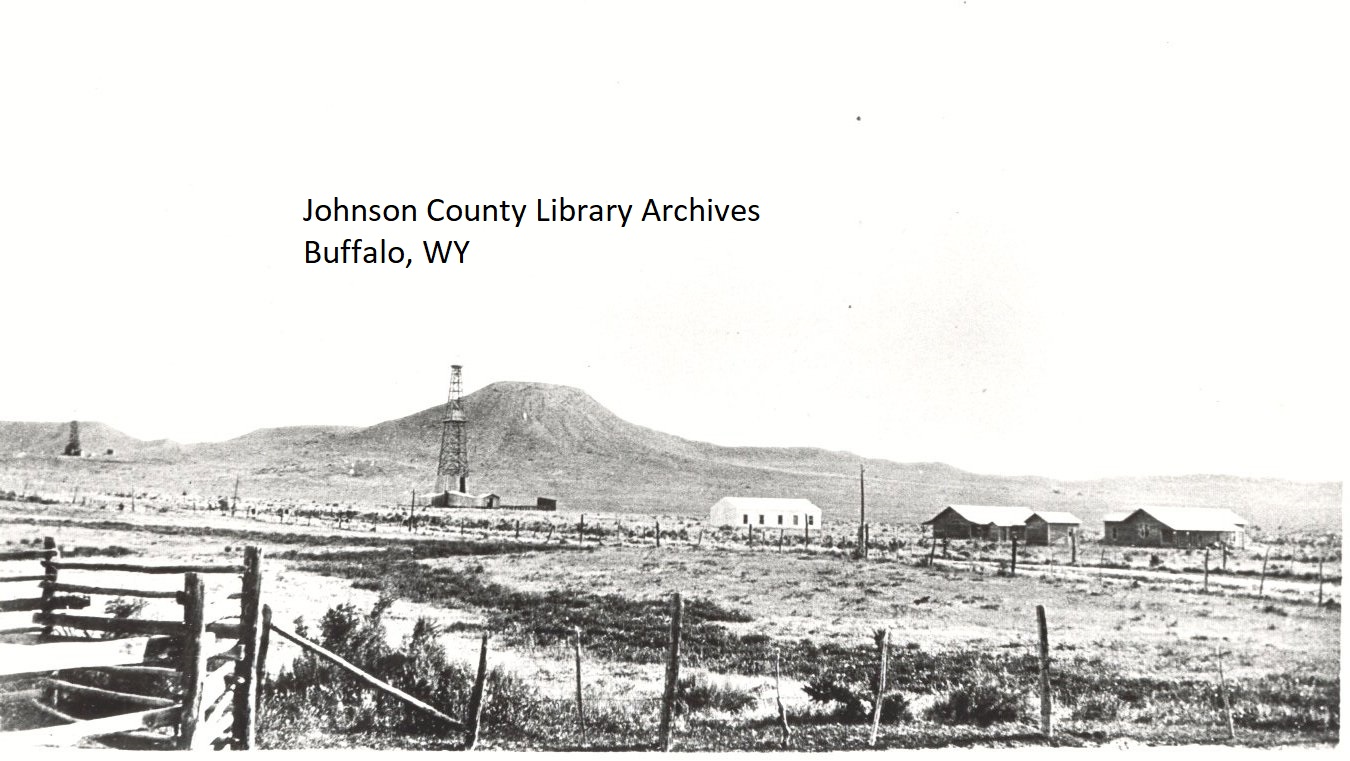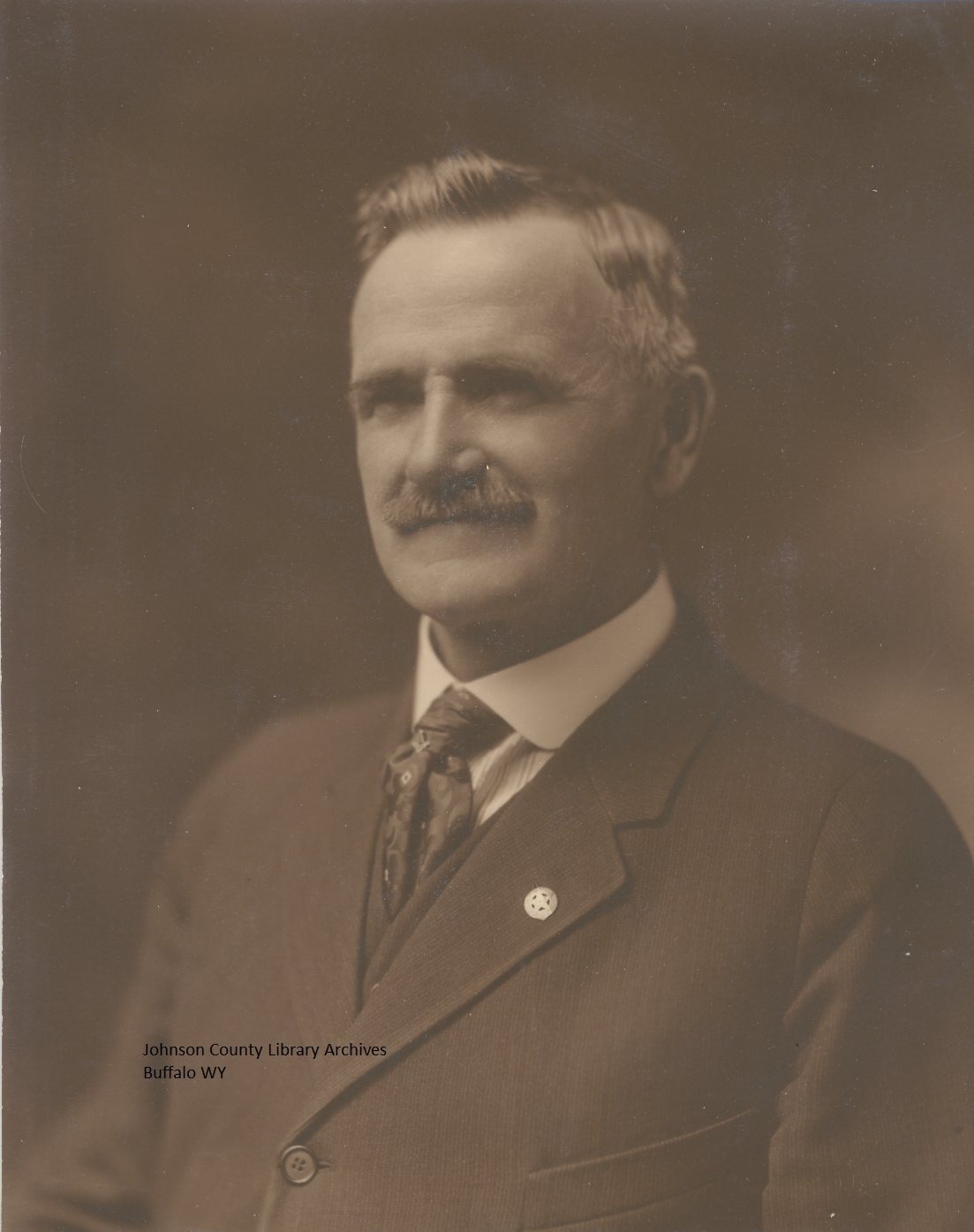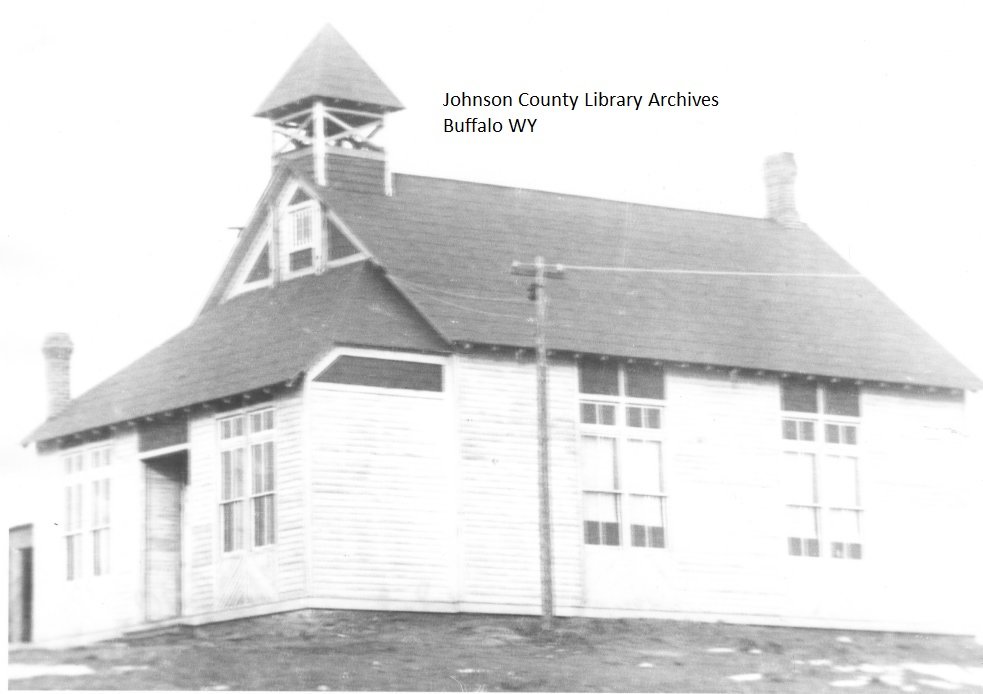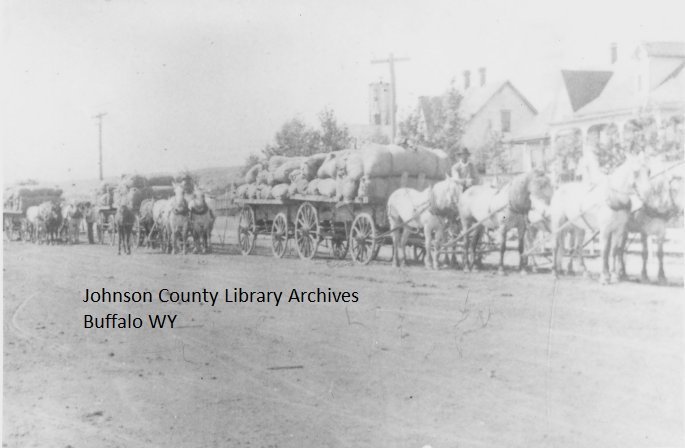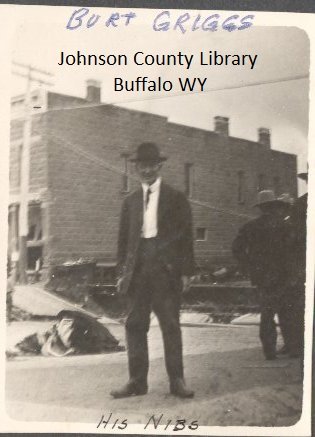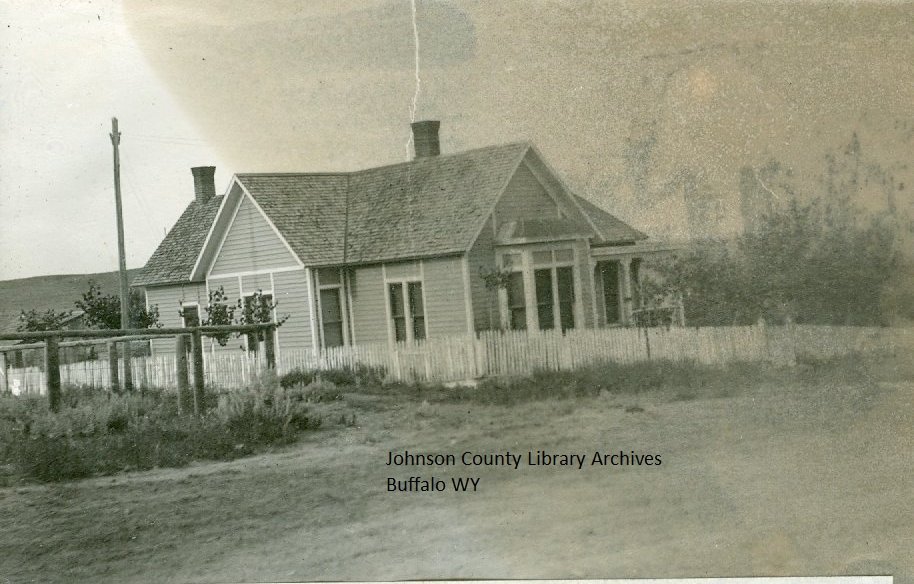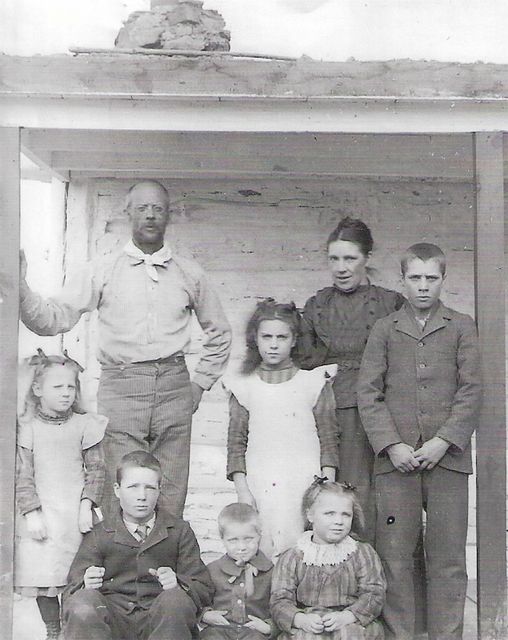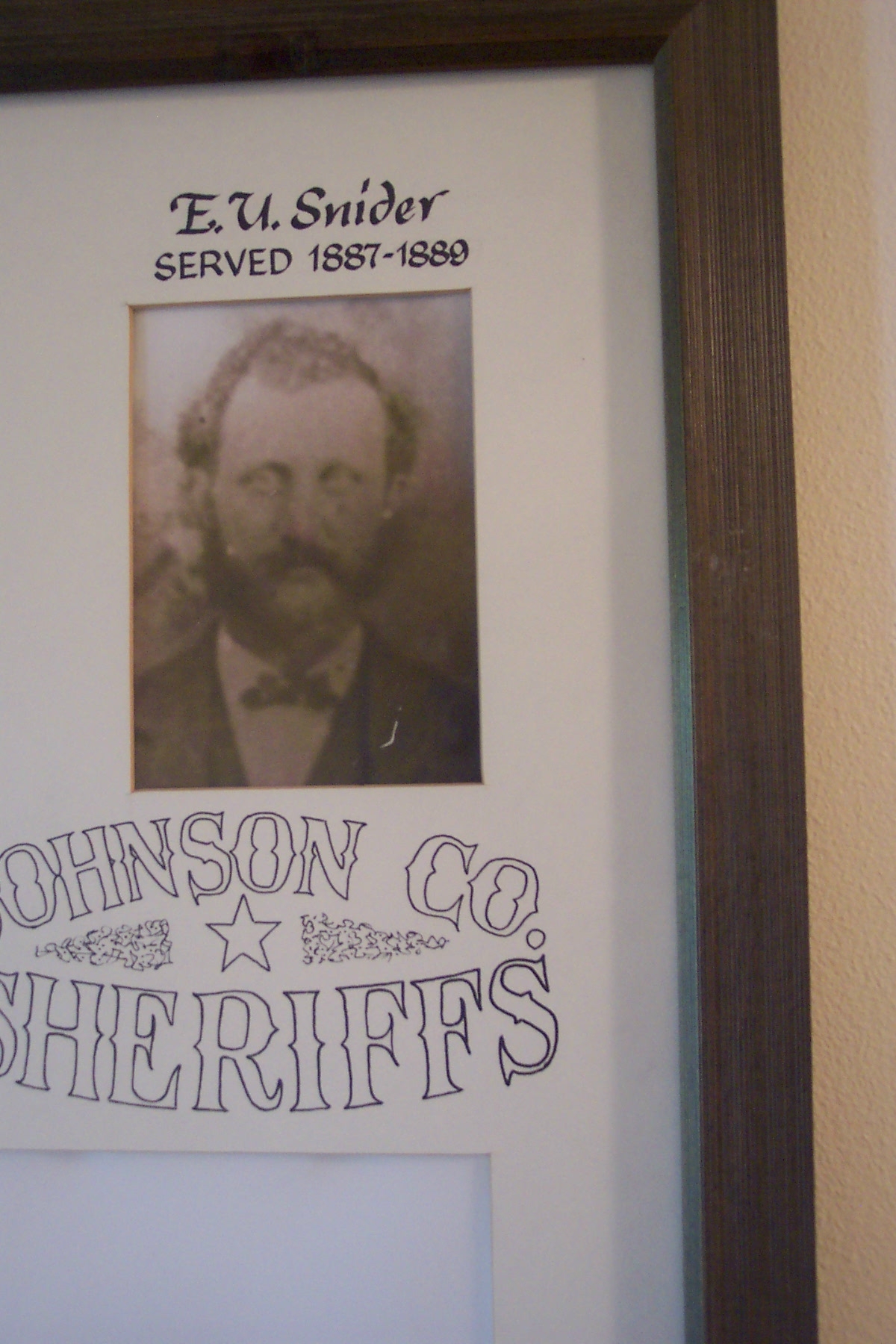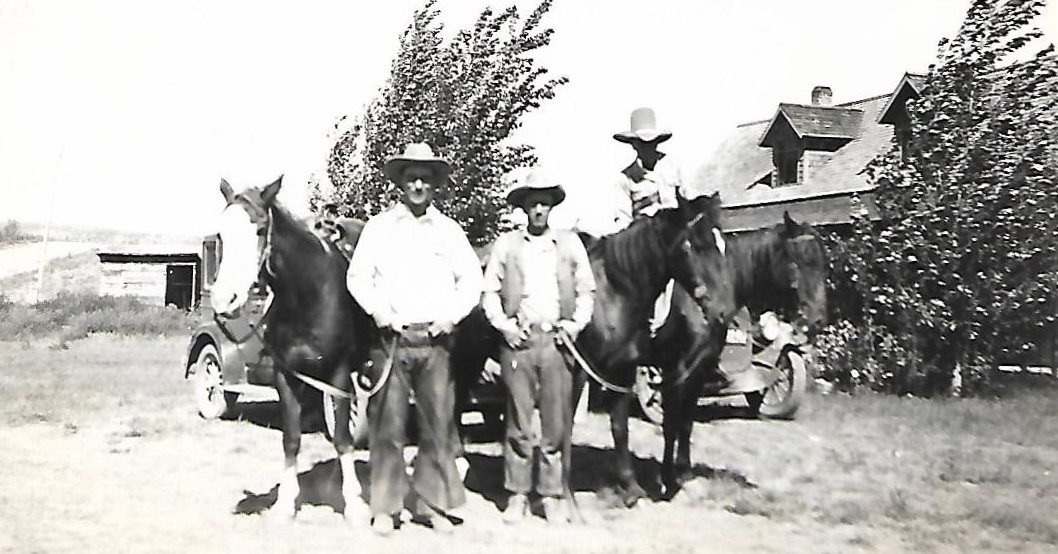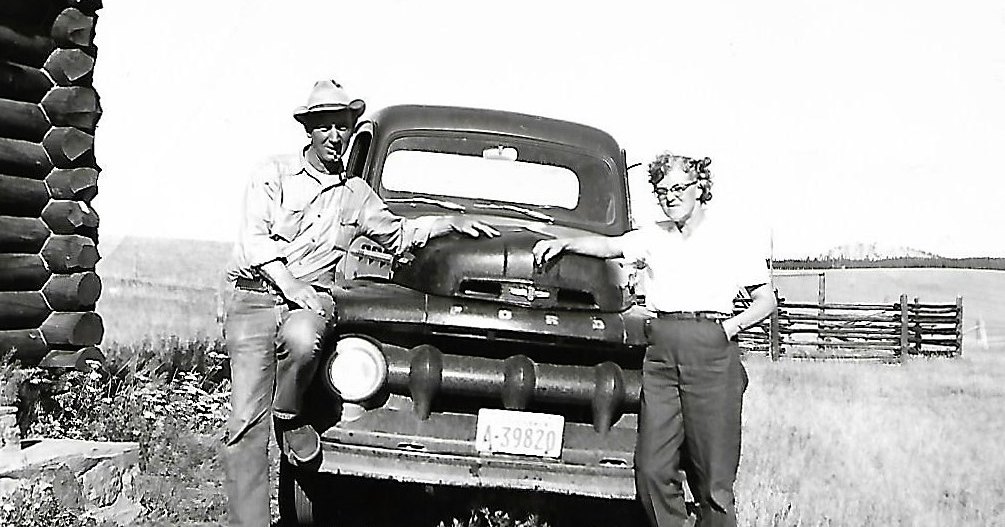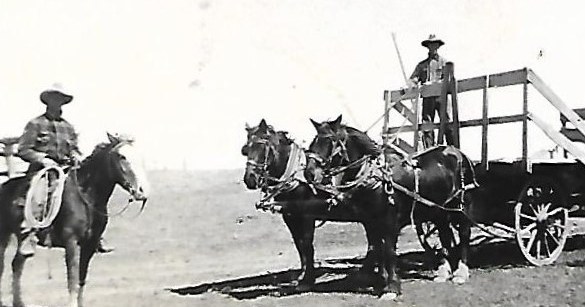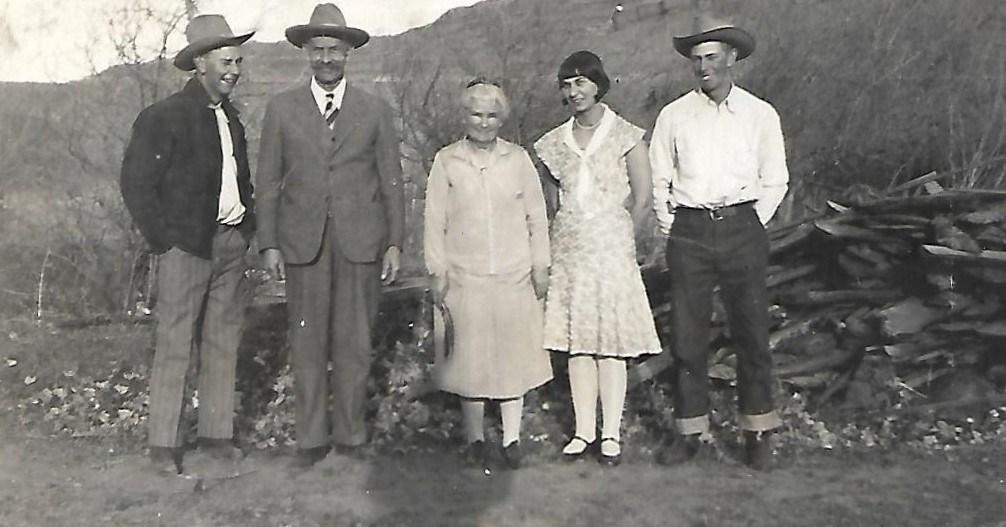|
CHARLES E. BUELL.
No man's destiny and not even his occupation can be predicted with
certainty in our free republic with its boundless wealth and
variety of opportunity. Many a one has left his home in the
thickly settled sections and plunged boldly into the wilderness,
with no thought of doing more than finding opportunity and
perhaps fortune for himself, and has become by force of
circumstances the founder of a town, the builder of a county,
the leader of a people. Such as this has been in some measure,
the history of' Charles E. Buell, who came from his native state
of Wisconsin to Wyoming in 1878, and the next year located where
Buffalo now stands. He helped to found and name the town and
erected the first house built within its limits, the building
now occupied by the Transportation Co., which he erected for the
Trabing Bros. Mr. Buell was born in Bloomfield, Wis., on July
25, 1855, the son of William I. and Frances M. (Matthews) Buell,
natives of New York and Ohio. The father is still farming in
Wisconsin, where the son was educated and grew to manhood. In
1878 he came west to Laramie City, Wyo., and a year later
removed to Johnson county, working in both places at his trade
of carpenter, which he had learned in his native state. In his
new location he found plenty of work at his trade although the
facilities for doing it were lacking in many respects. The first
building in the town, already alluded to, was built from
foundation to roof and fully completed without the use of a
nail. Mr. Buell worked a year for the Trabing Bros., after which
he built what is now the Occidental Hotel and opened it to the
public. When the next spring came he took a partner in the
business in the person of A. J. McCrea and for years thereafter
the hostelry was conducted under the firm name of McCrea &
Buell. The latter finally sold his interest to Mr. McCrea and
settled on a ranch he then owned on Shell Creek, which he had
taken up as a homestead, and was the first to be taken up in the
county. Here he prospered as a farmer and stock grower until
1893 when a disastrous fire burned him out and compelled his
removal to another ranch he owned. A little later he located on
the one which he now occupies and which is known as the
Somnesburger ranch. In all he owns 640 acres of excellent land,
comprising a desirable variety of meadow and range, and on this
he raises cattle, horses and sheep in considerable numbers of
superior quality. He is an enterprising and progressive citizen,
fully alive to every chance to advance the interests of his
community, and with the requisite public spirit to secure the
acceptance and proper use of the chance. On October 17, 1882, he
was united in marriage with Miss Jennie B. Herrick, a native of
Wisconsin, in which state the marriage occurred. They have had
five children, Helen E., the first white child born in Buffalo;
Mabel G.; Frances L.; Clarence, deceased; Miles W. Mrs. Buell's
father, Miles Herrick, a native of New York, is dead. Her
mother, Lutheria Herrick. resides in Buffalo.
C. H. COOK
One of the prominent and successful stock growers and farmers of
Johnson county, Wyoming, living on Johnson Creek, eight miles
west of Buffalo. C. H. Cook, can smile at fortune's freaks and
rest content in the secure and comfortable anchorage he has
found in a snug and safe harbor after many buffets of adverse
winds and tides. For he has challenged the capricious dame into
the lists and dared her worst assaults. He is a native of
Arkansas where he was born on April 2, 1850, the son of
Jefferson and Polly (Jones) Cook, who were born and reared in
Tennessee and removed to Arkansas soon after their marriage,
where the mother died while her son, C. H. Cook, was yet a small
child. Thus left an orphan at a very early age, Mr. Cook was
closely attached to the fortunes of his father and when five
years old accompanied him to Texas where two years were passed.
Together they then returned to his native state and in 1867 they
turned their faces to the Pacific coast, loading their worldly
possessions on wagons they drove their ox teams to San Diego
county, Calif., and there engaged in farming until the death of
his father, after which, in 1872, he made his way to Salt Lake
and from there to Colorado, hunting buffalo and gradually
working towards his old home in Arkansas. In 1873 he returned to
California and five years later came to Wyoming and in this
state and Colorado furnished hay to the U. S. government under
contract. In 1883 he determined to locate permanently on a
ranch, selected the one on which he now lives and at once began
improving it and aiding in the development of the surrounding
country. He built the first wire fence put up in what is now
Johnson county and was one of the organizers of the North Fork
Ditch Co.. which has constructed an irrigation ditch fifteen
miles long, through its aid reclaiming over 7,000 acres of arid
land. Mr. Cook has 160 acres of excellent land and is carrying
on an extensive stock industry with gratifying returns and
expanding volume. He was married at Denver, Colo., in 1872 to
Miss Mary Pauley, a native of Arkansas. After thirteen years of
happy wedded life she died at Buffalo, Wyo., in 1885, leaving
six children: Annie, married to Frank Yarwood; Fannie, deceased;
Maggie, married to Frederick Fernacasc; Hampton; Herbert; May;
all the living ones being residents of Johnson county. In 1889
he contracted a second marriage with Mrs. Phoebe Boyce, a native
of Wisconsin and at the time of her marriage with Mr. Cook a
widow with two children, William Boyce and Retta, now Mrs.
Edward Holloway of Johnson county. The Cooks have five children
living, Blanche, Benjamin, Churchie, Jennie and Melvin. Mr.
Cook's life has been busy and adventurous. He crossed the plains
thirteen times with teams when every hour was full of hazard,
and while contracting at different places saw much of danger and
disaster. He was at Fort Steele when the White River massacre
occurred, and like many another, became so inured to peril that
it seemed at times to almost lose its impressiveness. He is now
one of the leading and most highly esteemed citizens of the
county he has helped to build, having well earned his place in
the regards of his fellow men.
HON. GEORGE W. CRESWELL, M. D.
The most successful and still rising young physician and surgeon
of Buffalo, Johnson county, Wyoming, is George W. Creswell, M.
D.. who was born in Randolph. McLean county, III. on January 25,
1871, a son of William and Elizabeth (Thompson) Creswell,
natives of Londonderry, Ireland, and the state of Virginia.
William Creswell, the grandfather of Doctor George W., was the
first of this family to come to America; he settled in Quebec.
Canada, where he passed the remainder of his life, his widow and
her family subsequently removing to Illinois. William Creswell,
the father, has long been engaged in the stock business, in
which he has had experience in various states, being at present
located in Crook county, Wyo., where he owns an extensive ranch
and is still engaged in the cattle trade. Dr. George W. Creswell
acquired his elementary education in the public schools of
Bloomington, Ill., and when fully prepared entered the
Commercial College in the same city, from which he was graduated
in 1891. Being thus well grounded in the principles and
practices of business life, he entered the Northern Indiana
University in the same year, took a full four years' course and
was graduated from the medical department in 1894. He then
entered Rush Medical College in Chicago, where he was graduated
with honors and at once entered upon the active practice of his
chosen profession in the commercial metropolis of the Prairie
State, and for one year met with very flattering success. In the
fall of 1898 Doctor Creswell, believing that the less crowded
professional fields of the Far West offered inducements superior
to those afforded in the densely populated cities of the East,
where physicians "most do congregate," came to Buffalo, Wyo., to
try his fortunes and here his success has been so satisfactory
that he has seen no cause or reason to regret his decision, as
his medical talents has been fully recognized and his
professional ability appreciated to the extent that unvarying
success invariably enforces upon the general public or on
looking laymen. In 1901, Doctor Creswell took up an academic
course of study in the postgraduate college of New York, thus
adding to the medical erudition and experience he had acquired
by his previous study and practice, which has been and still is
of a general character. In politics Doctor Creswell is very
active in his party's counsels and extremely popular with its
rank and file, as well as with his fellow citizens generally. In
lyoo he was elected to represent his district in the State
Legislature of Wyoming and in 1901 was elected mayor of Buffalo,
in both of which offices he gave unqualified satisfaction, as he
performed their various duties with the tact of a practiced
veteran. Doctor Creswell was most happily joined in matrimony on
January 19. 1902, with Miss June J. Holloway, of Buffalo, Wyo.,
a daughter of the late Henry Holloway, of Buffalo. Wyo. Doctor
Creswell�s outdoor practice extends all over Johnson county,
in addition to which his office practice is reaching very
extensive proportions. In addition to the handsome income
derived from this practice, the Doctor has a source of profit
from a stock ranch in Crook county, in which he has a large
interest. The Doctor takes a lively interest in the prosperity
of his town and county and the progress of the state is to him a
matter of commendable pride, and the result of his patriotism is
that he has reached the very apex of public esteem.
THOMAS J. FOSTER
Thomas J. Foster of Sheridan is one of the highly respected
citizens of Northern Wyoming, coming to his estate of worldly
competence and the esteem of his fellow men through severe
trial, many hardships, great endurance and fidelity to every
duty. In knightly parlance he has "won his spurs" and worthily
does he wear them. He is the son of a pioneer family of Ohio,
where he was born on October 27, 1843. His parents, Robert J.
and Rebecca (Condi) Foster, were natives respectively of Ohio
and Pennsylvania, and when they began their career in life on
the soil of that great state it was little more than the
primeval wilderness, still under the dominion in large measure
of wild beasts and savage men, its luxuriance ungoverned, its
wealth of productiveness and hidden stores waste and unclaimed,
and all the forms of civilization unknown to its hills and vales
now so teeming with the fruits of cultivated life and so it was
in Wyoming, when their son, Thomas J., came here in 1876, a
veritable pioneer of pioneers in this section, and one of the
founders of the present greatness of the state. When Mr. Foster
was five years old his parents removed to Missouri, settling in
Holt county, and two years later his father was moved by the
prevailing gold excitement to cross the plains to California,
and the mother and children went to Ohio to await his return. In
1853 he joined them there and they again took up their residence
in Missouri. For seven years they pursued the peaceful vocation
of agriculture, and when in 1861 our land was darkened with the
awful shadow of the Civil War, following their convictions both
father and son joined hands with the Confederacy and enlisted in
its army. The father served until 1864, when he returned home
and went to Montana. Mr. Foster remained in the service until
the last flag of the Lost Cause came down at the surrender of
Gene. Smith, and then returned to his neglected home in
Missouri, soon after going back to Ohio. In 1868 he also made
the long trip across the plains, seeking the newer land of
promise, Montana, from whence after a short time he went to the
Boise Valley, Idaho, and engaged in branching. In 1874 he was
united in marriage with Miss Alice , a native of Iowa but reared
in Oregon, and two years after his marriage he came with his
family to Wyoming, passed two years at City and Cheyenne,
engaged in freighting, and in 1878 returned to his ancestral
vocation. Locating in what is now Johnson county, he took up
land on the site of the abandoned Fort Phil Kearney and went to
farming and raising stock, remaining until 1901, serving in the
meantime four years as register of the land office at Buffalo.
In 1901 he sold his ranch and took up his residence in Sheridan,
where he has a beautiful home, which is much sought as a center
of refined hospitality and genial companionship. Mr. and Mrs.
Foster were the first actual permanent settlers in Johnson
county and when they located on their ranch their nearest
neighbors were on Powder River, and also at Fort Custer, one
place seventy miles distant and the other 180. It goes without
saving that Mr. Foster has had many thrilling experiences with
road agents and in every other form of danger. For an account of
one adventure see the life of Frank Girard. He is a member of
the Knights of Pythias and the Old Settlers' Club of Sheridan.
The family circle contains in addition to Mr. and Mrs. Foster,
their son, Ellery D., who is a skilled bookkeeper, and an
adopted daughter, Vinnie.
CHRIS. J. HEPP
Born in Bavaria, where his ancestors had lived for generations and
where his mother died when he was but a child, coming to America
with his father when he was eight years old and living for a
time in Baltimore, later in Cincinnati and still later in
Chicago, then turning his back when he was but eighteen years of
age upon all the allurements and conveniences of the centers of
civilization and making his home on the wild frontier of the far
west, helping to conquer hostile Indians, destroy lawless stage
robbers and punish sneaking horse thieves, and giving himself
and his energies to the development of the country and the
multiplication and improvement of its civilizing influences,
Chris. J. Hepp, of Kearney in Johnson county, has seen almost
every phase of human life and has gathered wisdom from all his
observation. The story of his adventurous and busy life,
although fruitful in the elements of both comedy and tragedy,
can here be told only in commonplace details. He was born in
Bavaria on May 2, 1857, the son of Karl and Elizabetha (Koch)
Hepp, also natives of the same land. His mother died when he was
a young child and in 1865 he accompanied his father to America,
landing at Baltimore, Md., and after passing a few years in that
city removed to Cincinnati, Ohio, and somewhat later to Chicago,
Ill., attending the schools of these cities as he had
opportunity, working between times until 1872 when he went to
northern Wisconsin to begin the struggle for supremacy among his
fellows on his own account and he was there employed in the
lumber industry and at farming for three years. In 1875 he came
farther west and during the next two years courted the smiles of
fortune in the mining regions of the Black Hills. During the
gold excitement of 1877 he came to the Big Horn Mountains in the
second party of gold seekers who invaded this almost unknown
region, and after a summer of unsuccessful prospecting engaged
in hunting and trapping on Powder River and other streams near
Fort McKinney for two years. In the meantime, in 1878, he had
taken up a homestead on Little Piney Creek, twenty-three miles
southeast of Sheridan and fifteen from Buffalo, on what is now
the main road in Johnson county, it being a part of the ranch on
which he now lives. In 1879 he went to Laramie for implements
and materials for farming and returning to his ranch, on which
he had built a house during the previous year, he began to
cultivate and improve the land and has made of it a comfortable
and desirable home. He owns 1.000 acres, the most of it under
cultivation, and all devoted to his principal industry, raising
cattle, in which he has been continuously engaged since he
settled here. At the time of his occupancy of the land the
public survey had not been made, and he had but one neighbor, T.
J. Foster, on the creek. His land adjoined the old Fort Phil
Kearney reservation and contained the remains of the soldiers
and others who fell in the bloody massacre near this location.
These have since been taken up and buried on the Custer
battlefield. His first years of residence here were far from
quiet. Stage robbers and horse thieves gave him trouble, roving
bands of Indians looked upon his enterprise with unfriendly
eyes, wild beasts contested his right to peaceful possession of
the soil he was bringing into fruitfulness, but he resolutely
persevered in his efforts to gain a firm foothold and conquered
every obstacle and found himself surrounded with other hardy
adventurers for whom also the rugged frontier wore a winning
smile. The section in which they live is one of great historic
interest and is often visited by tourists on this account, it
will ever be known as a locality where great tradgies of human
life have been enacted and Mr. Hepp has a large and interesting
collection of souvenirs of the events and personages that have
made the region renowned. In the winter of 1885, at Grand
Island, Neb., Mr. Hepp was united in marriage with Miss Rosa
Weller, a native of Germany. They have six children, Rosa,
Ellis, Elsie, Lora. Clara and Chris. In April, 1898, he enlisted
in Co. C, First Wyoming Infantry, and served in the Philippine
Islands in battles and engagements with Spanish forces in 1898,
the assault and capture of Manila on August 13, actions with
Filipinos in 1899, the battle of San Pedro, Macati, February 5,
battle of Guadalupe February 22, battle of San Juan Del Monte
March 7, engagements at Maraquina and Antipolo June 3-4, Zapote,
in siege of Bakor and Imus June 15, the capture of San Nicholas
June 20. continuing in service until the fall of 1899 when the
regiment was brought back and he was mustered out as first
sergeant of his company, having made an excellent record for
gallantry and other soldierly qualities and having had a gold
medal and a bronze medal presented to him. He silenced a
Filipino battery single handed at the battle of San Juan Del
Monte on March 7, 1899; crawling within 200 yards of this
battery he fired into the battery and silenced it, as he was the
best shot in his company, having the best score in target
practice of any one in Co. C.
GEORGE P. HERSEY
George P. Hersey, a prominent and successful stock grower of
Johnson county, came to Wyoming in 1881 and has since resided
within her borders. He was then without capital except his
determined and resourceful spirit and his excellent health and
experience he has gained in hard knocks in various parts of this
country, but he is now one of the substantial and wealthy men of
his county. Whatever he has now in worldly possessions he has
accumulated in Wyoming and he may therefore be truly called a
production of the state as well as a developer of her industries
and natural resources. He was born in far away New Hampshire,
the son of Stephen and Caroline (Thompson) Hersey, natives of
Massachusetts. He grew to manhood and was educated in his native
state, living on the old homestead and assisting in its health
giving but unremunerative toil, until he was twenty years old.
In 1879 he came to Colorado and went to work in a mill and after
two years of this occupation removed to Johnson county, Wyo.,
settling on the Brace ranch. He also took up land in company
with Fred Hanchett. In 1886 he sold out to the 4 H Ranch Company
and then bought an interest in the enterprise. He was interested
with this outfit ten years when it sold out and in 1887 Mr.
Hersey bought a ranch on Rock Creek which he still owns, in 1887
settling on the ranch which is now his home, which consists of
2,200 acres of land under deed and 8,000 acres of leased
premises. On this wide expanse of territory he has large herds
of fine cattle, the most of his output being high-grade
Herefords. In all matters of benefit and utility to the section
in which he lives Mr. Hersey takes an earnest interest. He is
treasurer and one of the leading stockholders of the Clouds Peak
Reservoir Co., and has given much time and energy to its
development and the proper application of its benefits. In 1891,
at Butler, Mo., he was married with Miss Georgia Basma, a native
of Michigan. They have one child, their daughter Myrtle. Their
home is one of the pleasant resorts of the neighborhood, where
their friends always find a hearty welcome and a generous
hospitality and where the stranger can confidently enter an open
door and find pleasant entertainment.
RICHARD M. KENNEDY
A contributor in a leading way to the progress of the various
communities in which he has lived, always interested in the
general welfare and progress of his county and state, it is
eminently fit that Richard M. Kennedy, of Johnson county,
Wyoming, should now be the conservator of the peace, government
and dignity of the state, which as sheriff he upholds with a
firm hand and a judicious exercise of his official powers. He
was born in New York state on September 3, 1848, the son of
Michael and Mary (Burke) Kennedy, who left their native Ireland
early in life for the greater freedom, larger opportunity and
more agreeable political conditions of the United States, were
married in this country, and after spending a few years near the
Atlantic seaboard came west to Iowa in 1854. when their son
Richard was six years old. Here he grew to manhood, attended
school and from time to time assisted his father in his
carpentry and building operations. In 1872 he made a trip to New
Orleans, but soon sought again the Northwest, coming to Montana.
The next year he located in Johnson county. Wyo., and began
operations as a contractor and a dealer in timber. From 1882 to
1884 he served as deputy sheriff, during the next five years was
an extensive dealer in real-estate, while in 1889 he was again
appointed deputy sheriff and, after serving two years, went to
Portland, Ore., and passed the next two years dealing in
real-estate in that city. He then again came to Johnson county,
where he has since resided. In 1897 he was made one of the
custodians of the U. S. forest reserve, and in 1900 was elected
sheriff of the county as a Republican. He was reelected in 1902
and has since been adding to the excellent record in his
official duties which he had previously made. He has been
successful in business and owns valuable real-estate in city
property and farm lands. He is also interested in mines of value
and has very promising holdings in the Wyoming oil fields. In
1881 he was married to Miss Fannie Stroder, a native of
Missouri, but at the time a resident of Buffalo, Wyo. Both have
hosts of friends and their home is a popular resort for them,
being a center of gracious and refined hospitality and of
intellectual and social intercourse.
EMMA MIEKE
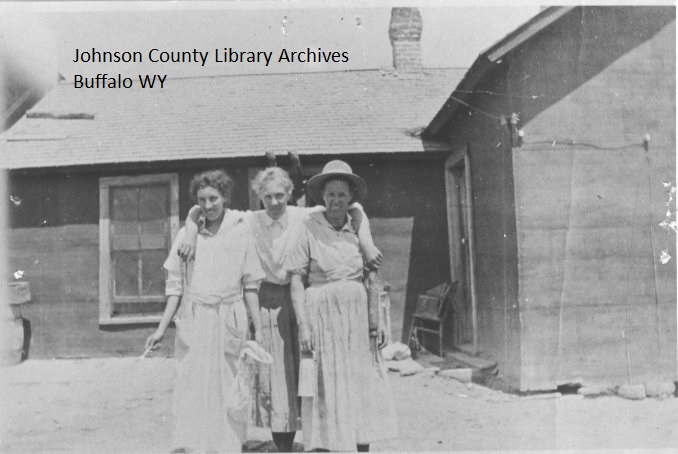
Mrs. Meike and Red Cloud
A story told by Burt
Griggs on KBBS radio March 6, 1954.
"Mrs. Meike was raised at Chadron,
Nebraska, which is at the edge of the Pine Ridge Indian Agency. Red cloud who
was the chief warrior of the Kearny (Fetterman) Massacre, spent his days there.
Where he lived there at the agency was only about
four miles from where Mrs. Meike was raised. She knew
him as well as her own father. He called her his 'little girl.' Red Cloud was
very fond of her, and he would drive by with his wagon and load her in and haul
her to Rushville or Chadron, so she knew him very well. He made an Indian pipe,
which he gave her along with a beaded tobacco sack. He carved the pipe out of a
piece of willow and carved a rattlesnake all up and down the side of it. It had
a clay bowl, and he burned a hole with a hot wire. He wrote her a note with his
Indian sign at the top of the page, and it said, 'From your scout, Mahataloota.'
He signed it and underneath it said, 'Red Cloud.' She give me that pipe and the
tobacco sack and his note. "
Photo of Janet Smith, Helen Meike Hutton and
Emma Meike
__________________________________________
FRANK L. SENFF
"Not honored less than he who heirs is he who founds a line." This
sentiment from our American Quaker poet applies aptly to Frank
L. Senff, one of the pioneers and builders of Johnson county,
Wyoming, whose untimely death on July 22, 1892, at the age of
fifty-three, in the full maturity of his physical and mental
powers, when his influence for good in his community was at its
height, caused universal regret. He was a native of Germany,
born on November 19, 1839, and there he grew to manhood,
received his education and learned his trade as a cutler. When
he was twenty-four years old, feeling cramped by the crowded
condition of labor and the obstacles to aspiration in the
Fatherland, and harkening to the voice of the New World offering
each workman what his special craft demands, each brain a ready
market for its wares, he embarked his hopes in the venture and
came to the United States, landing at Philadelphia and there
living and working at his trade for a period of five years. At
the end of that time he removed to Chicago and in that city
started an enterprise in cutlery on his own account, which he
conducted on an expanding scale for fourteen years, then sold to
seek a home in the farther West. This business is still in
vigorous progress and all the industries with which he was
connected in the state of his last adoption are flourishing and
healthy. When he came to northern Wyoming, in 1882. he stopped
at Pine Bluffs, near Cheyenne, long enough to get together and
fit up wagons for the transportation of himself and his
belongings across the territory, and, arriving in April of that
year, on the banks of Little Piney Creek, he took up a ranch
near the mountains. But, soon after, not liking the location, he
purchased the rights which had accrued in the ranch he now
occupies and used his right of preemption in connection
therewith and thus secured a desirable home, which he continued
to occupy until his death. The ranch is on Big Piney Creek,
fourteen miles north of Buffalo, well located, highly improved,
made very productive by skillful cultivation, and has an
enviable name throughout all the countryside for its genuine and
generous hospitality. The next year . after his arrival his
family joined him, and they inaugurated an industry in cattle
raising which is still in prosperous and progressive activity
and has grown to great dimensions. The ranch consists of 720
acres of deeded land and has attached a large acreage of leased
land. It is now under the direct supervision of Mr. Scuffs
widow, who has carried on its work successfully and skillfully
since his death, continuing, in her way and as far as she can,
the public spirit and interest in every good enterprise for the
advancement of the county which distinguished her honored
husband and made him one of the most esteemed, as he was one of
the earliest and most useful, citizens of his portion of the
state. On November 20, 1864, in the city of Philadelphia. Pa.,
Mr. Senff married with Miss Pauline Roesiger, his companion and
helpmeet to the close of his life. She was a native of Germany
and came to America, when she was quite a young woman, with
friends of her family, making her home with her aunt until her
marriage. Nine children blessed their union, all of whom are
living and prospering in various lines of active usefulness.
They are: Frank R.. now engaged in mining at Dawson, Alaska :
Arthur, who has a ranch adjoining his mother's; Mildred, now
married with J. G. Corslett and living at Sheridan, Wyo; Fred,
engaged in the pursuit of ranching,. also in Wyoming: Lena, now
a popular teacher in the schools of the state of Washington;
Agnes, married to W. F. Sonnamaker, and living on Prairie Dog;
Harry. Ernest and Edel. all belonging to the family household.
The family are Lutherans in church connection, as was Mr. Senff.
He was also a Republican in politics, but, while taking an
active interest in the welfare of his party, always sincerely
loyal to its principles and policies, he wasn't an office-seeker
nor a bigoted partisan. His love for his adopted country was
genuine and fervent, and where the interests of his community
were concerned he forgot party and every other narrowing
affiliation, in his broad and substantial patriotism. The name
of this family is a household word throughout its section of the
state, standing high in public and private regard wherever known
as a synonym for all the best elements of progressive American
citizenship.
JOHN R. SMITH
A pioneer of Wyoming, settling within her wild and unbroken domain
in 1866 when the adventurous foot of the white man was first
invading it, John R. Smith, one of the leading stockmen and
farmers and an influential and productive force in public local
affairs in Johnson county, has seen the beginning of the state's
history, has watched her progress, has aided in the development
of her civil, industrial and commercial institutions and has
helped materially to form and build her political and
educational institutions. He was born in Belmont county, Ohio,
on April 25, 1844, the son of George and Elizabeth (Shoup)
Smith, the former a native of Maryland and the latter of
Germany. When he was eleven years old he removed with his
parents to Indiana and there lived until 1861, attending school
and assisting or. the farm. When the great cloud of the Civil
War darkened our land he promptly enlisted in defense of the
Union in Co. H, (Morton Rifles) Thirty-fourth Indiana Regiment,
and served four years and seven months, participating in many
hard fought battles, even to the very latest struggle, in which
he bore a creditable part. He was the color bearer of his
regiment, and always in the thick of the fight. He also saw
arduous and very trying service against the Indians, and bears
upon his body the scars from wounds received on the field. After
the close of the war he came to Wyoming, establishing
headquarters where the town of Buffalo now stands and conducted
a freighting business between Fort Phil Kearney and Fort Smith
for a time and later between Sedgwick in Kansas and Denver and
Golden in Colorado, thereafter returning to Wyoming and locating
at Horseshoe near Fairmount, there engaging in farming and
raising stock until the Indians burnt him out, when he went to
the mining districts and mined for a short period, then entered
the service of the U. S. government carrying dispatches from
Camp Stambaugh to Fort Washakie. In this vocation he had many
thrilling adventures with the Indians and constantly carried his
life in his hands. The savages were hostile, alert and
determined; he was vigilant, courageous and resourceful. He
triumphed over all their arts, demonstrating the superiority of
the trained intellect over natural cunning. In 1876 he joined
General Crook's expedition against the savages, coming with this
great commander to Wyoming as a scout. He also conducted a
settler's store in this campaign and later had a contract to
furnish beef for Crook's army. In 1887 he settled where he now
lives, locating on the first government land taken up in the
neighborhood and digging the first irrigating ditch in this part
of the country. From the first he has been actively engaged in
raising cattle and horses and improving his land. He now owns
720 acres, admirably adapted to ranching, and here breeds fine
Percheron horses, conducting the business with vigor and
success. In politics Mr. Smith is an ardent and zealous
Democrat, but in local affairs is more of a patriot than a
partisan. He was one of the first board of commissioners for
Johnson county and helped to organize the new county and his war
experience and the associations and recollections belonging to
it have made him a loyal and enthusiastic member of the G. A. R.
In November, 1870, he married with Miss Agnes D. Delaney, a
native of Ireland. They have four children, Alfred M., a
prominent stockman of Johnson county; Mary E., Wyoming and
George E. All are natives of Wyoming and residents of the state,
contributing to its advancement and adorning its citizenship.
LEWIS A. WEBB
A Wyoming pioneer of 1886, in which year he settled in what is now
Johnson county, near the present town of Mayoworth, Lewis A.
Webb has witnessed the transformation of this section from a
wilderness into something like a garden and has contributed his
due portion to bringing about the change. He first saw the light
of this existence on November 22, 1851, in Louisiana, where his
parents, John and Zada A. Webb, were born and reared and were
living at the time of his birth. When he was five years old they
removed to Texas, and, there, in the course of time they died
and were laid to rest. He was reared on a Texas farm, and,
following the custom of the country, after he left school, he
began the handling of cattle and horses, breeding and raising
them for the Eastern markets. In 1886, induced by the prospects
of the newer country with its wider and more varied range and
less active competition, he came to Wyoming with a drove of
horses, and located on Dutch Creek. After selling his horses he
entered the employ of a stock company and worked faithfully for
the corporation for two years, then bought cattle and again
engaged in the stock business for himself, settling on a portion
of the land which he now occupies. He now owns 740 acres of
land, with about 2,000 head of cattle. He has prospered in his
business, owing to his superior judgment and capacity in
conducting it, and has become one of the substantial men of the
county, having potency in more than one line of commercial and
industrial activity, and financial standing of weight and
influence. He is a stockholder in the Stock growers Bank of
Buffalo, Wyo., and has personal connection with other
institutions of enterprise and usefulness. Mr. Webb married, in
1898, in Bighorn county, Wyo., with Miss Jeannette M. Mercer, a
native of Oregon. They have two children, Zada M. and Anita. The
head of the house is a member of the Independent Order of Odd
Fellows, belonging to Buffalo Lodge, No. 44, and in politics is
an ardent working Democrat. He has helped materially to raise
the standard of cattle in his part of the state by breeding from
thoroughbred Herefords. giving to this line of activity, as he
does to every other, the best energies of a mind well trained by
experience.
|
![]()
![]()

